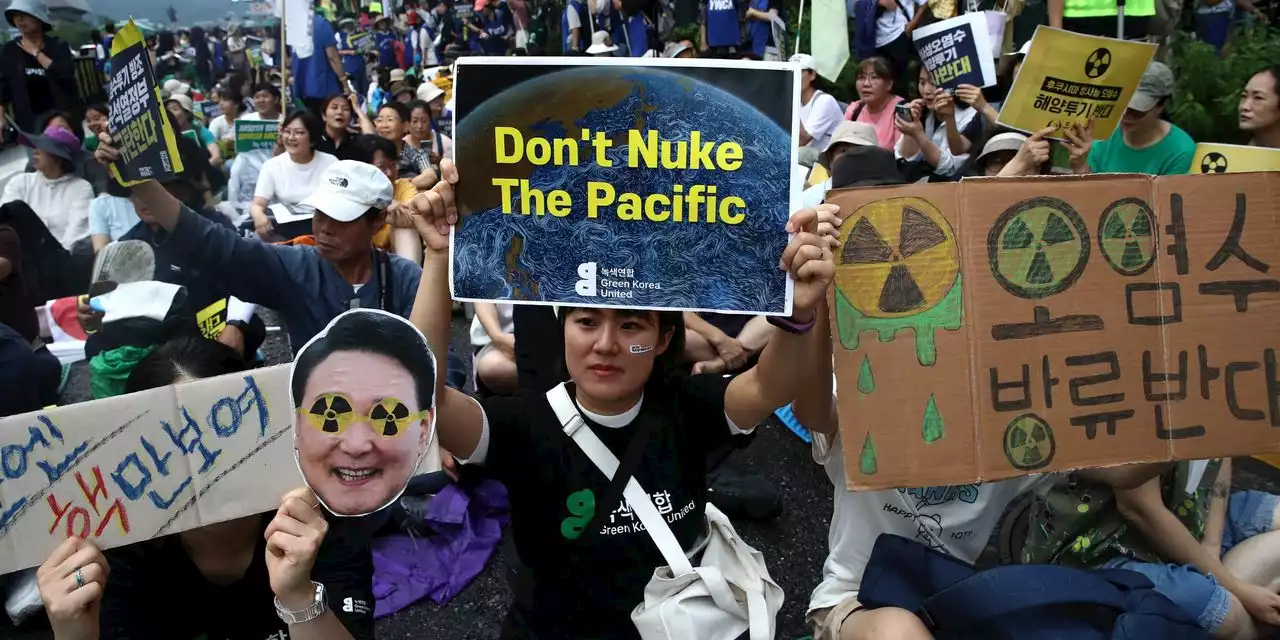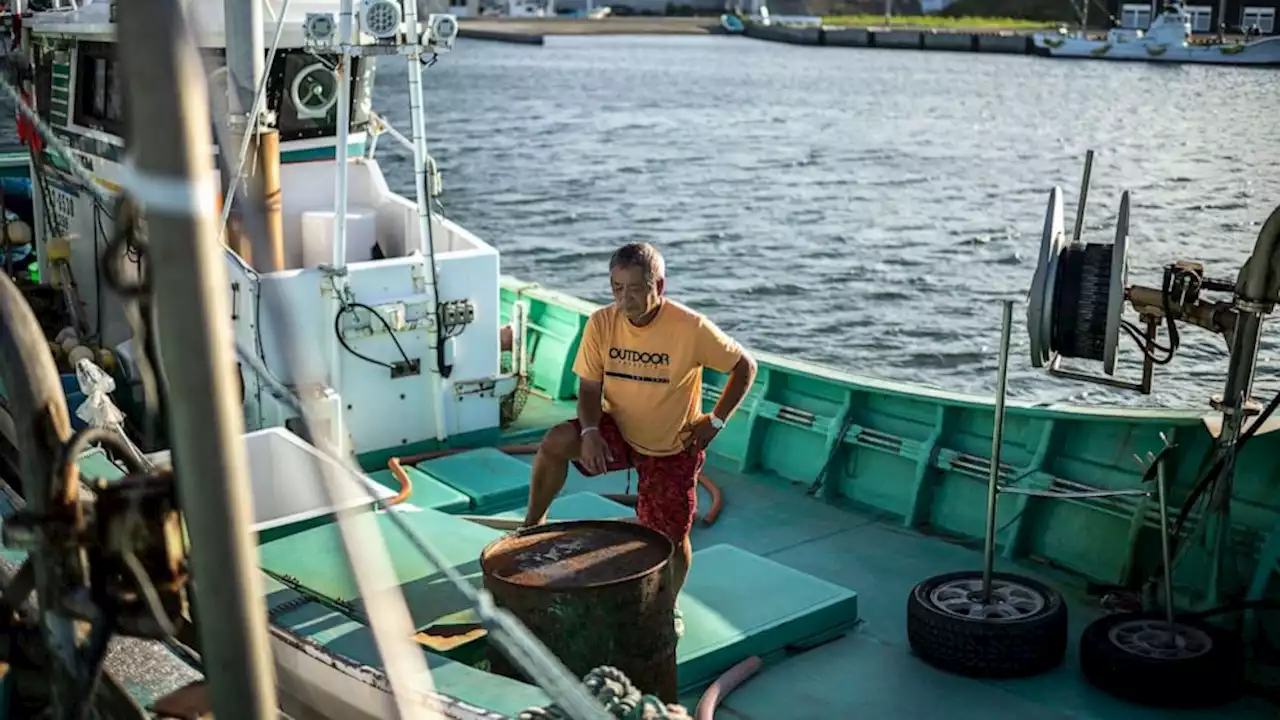Japan plans to begin a decades-long process of releasing treated wastewater from the 2011 Fukushima nuclear meltdown into the Pacific Ocean on Thursday.
The decision, the latest in a long process of cleaning up one of history's worst nuclear accidents, has faced significant opposition. Concerns range from environmental risks to economic impacts on fishing. The discharge process is projected to last for decades, perhaps up to 40 years.
An underground pipeline, extending more than half a mile will channel the treated wastewater into the Pacific Ocean. Junichi Matsumoto, the TEPCO executive in charge of the operation, emphasized that safety will be paramount throughout the process. Kishida, facing an enormous challenge from slumping poll numbers and domestic and international opposition to the plan, appeared to achieve the optics he was seeking. Grossi managed to create some separation between his U.N. watchdog group and the decision to proceed with the wastewater release, distancing the organization from direct responsibility.
Shortly after the IAEA's assessment was delivered to Kishida, South Korea, which had initially opposed Japan's plan, shifted its position. South Korea's independent review found the proposed water release to be in line with its national standards. Their assessment determined that the potential impact of radioactive elements, including tritium, on South Korean waters would be minimal, provided the release is carried out as planned.
Members of environmental civic groups shout slogans during a rally to denounce the Japanese government's decision to release treated radioactive water into the sea from the damaged Fukushima nuclear power plant, outside of a building which houses Japanese Embassy, in Seoul, South Korea, Tuesday, Aug. 22, 2023.After submitting the IAEA study results on Japan’s plan to Kishida in July, Grossi headed east in attempts to calm the storm in South Korea.
Park Yeouhwan, a representative of South Korea’s fisheries and a seaweed cultivator, remains skeptical of Japan’s water release plan. During a press conference in Tokyo this summer, he expressed concern about the potential catastrophic consequences that decades-long release could have on the marine ecosystem and the livelihoods of fishermen.Pedro Pardo/AFP via Getty Images
United States Latest News, United States Headlines
Similar News:You can also read news stories similar to this one that we have collected from other news sources.
 Fukushima nuclear plant will start releasing treated radioactive water into Pacific Ocean as early as ThursdayThe controversial move comes more than 12 years after nuclear meltdowns at the plant caused by a massive earthquake and tsunami.
Fukushima nuclear plant will start releasing treated radioactive water into Pacific Ocean as early as ThursdayThe controversial move comes more than 12 years after nuclear meltdowns at the plant caused by a massive earthquake and tsunami.
Read more »
 Japan to Release Water From Fukushima Nuclear Plant Into Pacific This WeekNeighbors such as China protest the decision, which got the green light from a U.N. nuclear agency.
Japan to Release Water From Fukushima Nuclear Plant Into Pacific This WeekNeighbors such as China protest the decision, which got the green light from a U.N. nuclear agency.
Read more »
 Japan to start releasing Fukushima plant's treated radioactive water to sea as early as ThursdayThe Japanese government treated and diluted radioactive wastewater from the Fukushima Daiichi nuclear power plant will be released into the ocean as early as Thursday.
Japan to start releasing Fukushima plant's treated radioactive water to sea as early as ThursdayThe Japanese government treated and diluted radioactive wastewater from the Fukushima Daiichi nuclear power plant will be released into the ocean as early as Thursday.
Read more »
 Japan to start releasing Fukushima plant's treated radioactive water to sea as early as ThursdayThe Japanese government treated and diluted radioactive wastewater from the Fukushima Daiichi nuclear power plant will be released into the ocean as early as Thursday.
Japan to start releasing Fukushima plant's treated radioactive water to sea as early as ThursdayThe Japanese government treated and diluted radioactive wastewater from the Fukushima Daiichi nuclear power plant will be released into the ocean as early as Thursday.
Read more »
 Japan to start releasing Fukushima plant's treated radioactive water to sea as early as ThursdayThe Japanese government treated and diluted radioactive wastewater from the Fukushima Daiichi nuclear power plant will be released into the ocean as early as Thursday.
Japan to start releasing Fukushima plant's treated radioactive water to sea as early as ThursdayThe Japanese government treated and diluted radioactive wastewater from the Fukushima Daiichi nuclear power plant will be released into the ocean as early as Thursday.
Read more »
 Japan to start releasing Fukushima plant's treated radioactive water to sea as early as ThursdayThe water release begins nearly 12 and half years after the March 2011 nuclear meltdowns caused by a massive earthquake and tsunami.
Japan to start releasing Fukushima plant's treated radioactive water to sea as early as ThursdayThe water release begins nearly 12 and half years after the March 2011 nuclear meltdowns caused by a massive earthquake and tsunami.
Read more »
